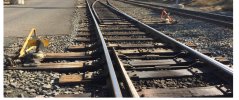Agree with the smart ar**s comment. With 40 years experience, the best Signallers are the ones that will learn to listen to those teaching them and not think they know it all because they have just passed a signalling course. The learning starts at the first signal box and continues through till the day of retirement. The job is continually changing and evolving, so whether a trainee or an experienced Signaller, learn to look, listen, and learn.
This, 100%.
I'm project engineering by background (track specilisation), and reasonably senior now. However, I fully agree that I started learning the day I started asking questions, learned a lot more on formal training, am still learning loads over 20 years into my railway career, and will continue learning until the day I retire or even later (or run away screaming!)
The industry is a great place but you'll also find it full of "It always works like this, except for here and for this type, where you have to do it differently..."
There's a whole variety of types of pointwork. Some you can drive through in the trailing direction whether they are set for you or not, and they will be fine. The majority these days, you cannot, and this will damage them. Some have detection, some don't. Some are hand operated, some spring loaded, some local panel controlled, signal box controlled, local released but interlocked, etc etc etc.
Lots of variety to learn about. Relax and don't be afraid to ask those around you wherever you are to be working. Most people like to share their knowledge! But be careful about assuming that what you learn in place A will apply to place B. There's a good chance there will be some difference somewhere...
Don't be put off - we're not saying don't ask questions, not at all. This forum is great for sharing knowledge and info, and it's great that you're keen. It really is. Just be aware of the complexity that you're getting into and accept that you will never reach a day when you know everything. Be open to those around you, above, equal and below you on the payscale and seniority scales, and don;t be afraid to ask the silly questions. I make it a habit in my meetings to stop and say "What does that acronym stand for please?" or "Could you explain breifly what that system you have referred to there is please?"
Sometimes I already know the answer, but I'm all too aware of how many people around me often just assume they are the only ones who didn't understand that, or worse still make an assumption and carry on. It's interesting how often others will then say "Yes, I didn't understand that part either" when I do ask those questions.
Best wishes with your new job.




